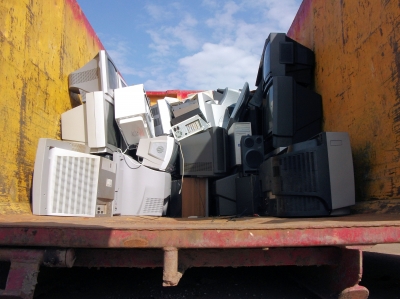Meanwhile, global e-waste volume is forecasted to grow 17.6%, increasing from 93.5 million tons in 2016 to 130 million in 2018. The study is titled ‘Electronic Waste Management in India’ and was conducted on World Environment Day.
Indians are enjoying an increasing disposable income, and a subsequent increase in electronic appliances and items. Of the total e-waste material generated, computer equipment makes up close to 70% and telecommunication equipment ranks a distant second at 12%. Electrical and medical equipment have an 8% and 7% share of the e-waste, respectively. Other equipment and household e-waste make up the remaining 4%.
Unfortunately, just 1.5% of the total e-waste in India is recycled, due to poor legislation, framework and infrastructure. This leads to a wastage of limited natural resources and permanent damage to the environment and health of industry workers, according to the report. The unorganised sector and scrap workers manage over 95% of the e-waste, dismantling the disposed products rather than recycling it.
The report also found that around 400,000-500,000 child labourers in the 10-15 years age group are engaged in e-waste activities in yards and recycling workshops, without adequate safeguards or protection. ASSOCHAM has strongly advocated effective legislation to prevent child labour in the distribution, segregation and collection of e-waste.
Additionally, the report found that e-waste workers suffer from bronchitis, asthma and other breathing problems, and many workers are children too young to be aware of the hazards. They become incapable of working by the time they are 35-40 years old. Around two-thirds of e-waste workers suffer respiratory conditions such as coughing, irritation, breathing difficulties, tremors and choking, due to improper safeguards and practices at dismantling workshops.
Works are exposed for long hours to poisonous chemicals and fumes such as concentrated acids and caustic soda, used in order to recover metals such as copper, lead, platinum and gold. Safety gear and equipment such as ventilation fans, face masks and gloves are seldom heard of.
The study found that the most dangerous e-waste were mobile phones, televisions and computers, due to their high levels of cadmium, mercury and lead, and their short life-spans. The industrial, public and government sectors were the main e-waste sources, accounting for close to 75% of the total. Individual households contributed around 16%, and manufacturers accounted for the remainder. Although households contributed a relatively small amount of computer e-waste, they consumed large amounts of consumer durables and are potential creators of waste.
E-waste makes up around 70% of heavy metals and 40% of lead in landfills, leading to soil acidification, air pollution, and ground water pollution. Prolonged exposure to these pollutants can lead to skin disorders, respiratory disorders, lung cancer and more.










